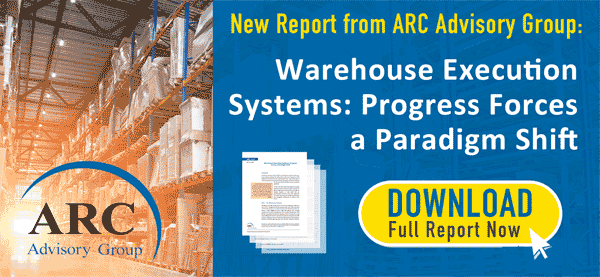2021 Supply Chain Predictions from the Analysts Part 2
Last week, as I do every year, I summarized some 2021 supply chain predictions from the analyst community, beginning with a selection of what Gartner calls "predicts" on supply chain technology. (See 2021 Supply Chain Predictions from the Analysts Part 1.)
Gartner changes up its prediction mix each year, in the past offering predictions for global logistics, supply chain planning, chief supply chain officers and more, but for 2021 the only supply chain specific predictions I can find are the ones on technology summarized last week.
But what is there this year are a slew of predictions relative to business and IT strategy, one of which is directly connected to supply chain, and another indirectly so.
| GILMORE SAYS: |
WHAT DO YOU SAY?'
Gartner says today, "blockchain has yet to live up to this expectation outside some very narrow use cases."
Send us your
Feedback here
|
Here we go:
In an interesting prediction, Gartner analyst Rajesh Kandaswamy writes that "By 2025, customers will be the first humans to touch more than 20% of all products and produce."
The future state of supply chains, Gartner says, is "a fully automated process that results in a product advancing through the assembly line, onward through the supply chain and distribution channels to arrive at the end customer, whereby the first human to touch and interact with the product is the consumer."
And maybe not that far in the future. If Gartner is correct we will be seeing a lot of this by 2025. In fact, Gartner says that by that time "there will be a critical mass of commercial examples of products or produce that have fully automated end-to-end processes."
That seems a bit too aggressive of a timeline to me, but we'll see.
Gartner says social distancing requirements or general virus fears (whatever those will turn out to be going forward) will drive some of this automation, especially in the food supply chain.
In turn, some companies will use such automation to differentiate their total offering - as the ability to fully automate all aspects of business leads to new opportunities to reconsider product design, material use, plant locations and use of resources in the medium-term, Gartner says.
Kandaswamy is certainly bullish on adoption of such automation in the near term. He also predicts, for example, that by 2024, 30% of all new relevant food factories and farms will be fully automated. Further, he says that by 2023, machines and computers will be able to perform 25% more types of tasks independently, when compared to today.
And as the level of automation increases, it will create new opportunities - and trade-offs. Use of automation will vary both in the ability to well handle different processes and the ability to handle different natural or artificial materials, Gartner says. Material selection, product design and even package design will all be affected.
The ability to fully automate the supply chain will also alter or reduce constraints on location of manufacturing, production or farming, Gartner says, citing as an example vertical farming, which requires significantly less space. That can make it possible to open farms close to urban areas.
"As automation techniques improve, they will also lead to firms whose operating model and cost structure is based on such full automation," Kandaswamy writes, adding that "Industry incumbents will face such entrants who compete using different business models. Firms relying on more automation have already emerged in industries ranging from financial technology to online groceries, and this trend will only accelerate."
Incumbent businesses better quickly evaluate how much automation can be a source of competitive advantage and address it proactively, Gartner adds.
My thoughts - all this is most likely directionally correct, but think it will take much longer than Gartner seems to expect.
This next Gartner prediction is only tangentially connected to the supply chain, but quite interesting nevertheless. Gartner analysts Daryl Plummer, Don Scheibenreif, and Gene Alvarez predict that "By 2024, 30% of major organizations will use a new "voice of society" metric to act on societal issues and assess the impacts to their business performance."
Voice of society - what's that?
The voice of society is "the shared perspective of people in a community that drives the desire to represent and drive ethical values toward a commonly acceptable outcome," Gartner says.
Gartner says that already "External groups, communities and employees are putting pressure on corporate brands to measure their impact on society."
They go further, arguing that business metrics must expand to include a focus on the voice of society that will be equal with other business metrics such as click-through rates and customer satisfaction surveys in terms of measuring performance.
More ominously, they warn that "Enterprises or organizations that are tone deaf to the voice of society will find their brands, products, messages and revenue at risk surprisingly fast."
So at one level, it seems to me, this is just an extension of the Corporate Social Responsibility trend, but shifts, if you will, the focus from what a company thinks it should do in this area to incorporating a new external input to performance measurement and decision-making.
We're in a new era, for sure.
Closing this out, recently Gartner started to conclude various "predicts" with a look back at previous prognostications that were on target - or not so much.
 On the positive side (and interestingly), in 2017 Gartner predicted that "Through 2020, 90% of supply chain blockchain initiatives will remain proof-of-concept initiatives." On the positive side (and interestingly), in 2017 Gartner predicted that "Through 2020, 90% of supply chain blockchain initiatives will remain proof-of-concept initiatives."
Gartner notes that back then, the market hype was that blockchain offered opportunities for enterprises to operate more efficiently and reduce risk factors as products moved across the supply chain.
Alas, Gartner says today, "blockchain has yet to live up to this expectation outside some very narrow use cases."
In fact, Gartner that says, most of the use cases cited as blockchain are more "blockchain-inspired" than true blockchain.
"We said then, and it remains true today, that enterprises need to be cognizant that supply chain use cases where true value-add is derived from blockchain technology alone are limited to a few examples, and these are still at a proof of concept (POC) stage," Gartner notes this year. "Even where companies have gone beyond POC, a very small percentage has ever been able to scale."
On the negative side of the forecasting ledger, another 2017 prediction was that "By 2021, one in 10 warehouse workers in established economies will be replaced by autonomous mobile robots (AMRs)."
Gartner said that in 2017, it believed that the cost and reduced availability of operational labor in the established economies of Europe, Japan, South Korea and North America were going to motivate companies to seek emerging technologies like robotics to address these issues.
Now Gartner says, "Although interest has been high over the last three years, actual deployments have not reached the levels we predicted three years ago."
It sees a a key factor that is slowing rapid AMR adoption is that there are too many, not too few, options for customers. Based on its interactions with clients on this topics, Gartner says many companies remain very interested in AMRs, but are struggling to determine which of the many options is best suited for their longer-term needs.
"Consequently, while the three-year projection was off, this will likely manifest more slowly over the next several years as companies recover from the impacts of the pandemic," Gartner now says.
So there you have it, 2021 predictions from Gartner part 2. I plan to close out this series on predictions with some thoughts from IDC Research next week.
Any reaction to the Gartner predicts? Let us know your thoughts at the Feedback button (email) or section below.
|








 On the positive side (and interestingly), in 2017 Gartner predicted that "Through 2020, 90% of supply chain blockchain initiatives will remain proof-of-concept initiatives."
On the positive side (and interestingly), in 2017 Gartner predicted that "Through 2020, 90% of supply chain blockchain initiatives will remain proof-of-concept initiatives."

